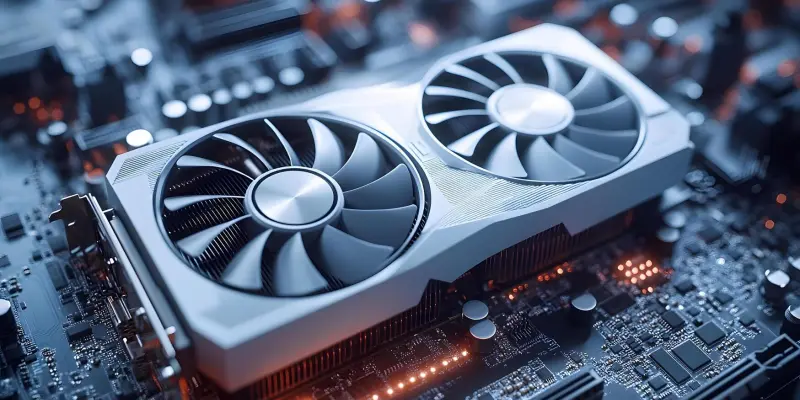The graphics card market continually undergoes transformation as technological advancements redefine computing capabilities, consumer demands, and industry standards. NVIDIA has long been a leading force in pushing the boundaries of graphical processing. The company’s latest endeavor, the GeForce RTX 50 SUPER lineup, further solidifies its commitment to excellence. This revamped series introduces the highly anticipated RTX 5080 SUPER and RTX 5070 SUPER models, each aiming to address previous generation shortcomings. With a focus on expanding VRAM capacities to 24 GB and 18 GB, the lineup promises to enhance performance in memory-intensive applications. Such developments are poised to impact AI workloads significantly and solidify NVIDIA’s standing in the high-end GPU segment where competition remains sparse.
Tackling Initial Challenges with Strategy
Overcoming Inventory Issues and Driver Setbacks
NVIDIA’s RTX 50 series launch faced challenges, with inventory shortages frustrating consumers and hindering availability in key markets. These issues, coupled with occasional display driver crashes, prompted NVIDIA to re-evaluate its strategic approach. Introduced in response, the SUPER lineup promises greater reliability and availability, ensuring consumers have access to the latest advancements. A focal point has been enhancing the robustness of display drivers to minimize disruptions in gaming and professional tasks. These improvements aim to counteract previous criticisms, fostering a seamless user experience across demanding applications, particularly where stability and performance are paramount.
Strengthening Market Position with Improved VRAM
The inclusion of GDDR7 technology in the RTX 50 SUPER series signifies a crucial step in addressing memory constraints. With the RTX 5080 SUPER offering 24 GB of VRAM and the RTX 5070 SUPER equipped with 18 GB, NVIDIA enhances memory bandwidth and data throughput remarkably. Such an upgrade is critical for users engaged in AI computations, complex 3D rendering, and high-resolution gaming. These new capabilities provide professionals and enthusiasts alike with the tools necessary to harness the full potential of cutting-edge software environments. This strategic augmentation accounts for future growth in software demands, ensuring the longevity and adaptability of the SUPER series in a perpetually evolving digital landscape.
Navigating Economic and Competitive Landscapes
Competitive Advantages in a Sparse Market
With minimal competition in the high-end GPU segment, NVIDIA has an opportunity to dominate with its RTX 50 SUPER lineup. This strategic edge hinges on leveraging its technology to offer unparalleled performance and reliability. The SUPER lineup’s enhancements in VRAM and driver stability could cement NVIDIA’s reputation as the go-to choice for premium graphical power. It allows the company to capture the attention of influencers in sectors ranging from video editing to gaming. The focus is not just on maintaining current standards but also setting new benchmarks that competitors must strive to surpass. NVIDIA’s commitment to innovation and quality presents a profound challenge for any potential rivals aiming for the same market segment.
Price and Tariff Considerations
Despite the technical prowess of NVIDIA’s RTX 50 SUPER lineup, the potential roadblock of pricing remains. Ongoing global tariff conflicts and rising PC component costs can impact the affordability of these advanced graphics cards. As NVIDIA navigates these economic hurdles, pricing strategies may need to balance profitability with consumer accessibility. By crafting a pricing model that appeals to various segments of the market, from avid gamers to industry professionals, NVIDIA could mitigate potential backlash over costs. Such pricing strategies are essential in ensuring the SUPER lineup’s success in capitalizing on the demand for high-performing GPUs, especially as consumers weigh performance against financial investment.
Anticipation and Future Prospects
Pursuing Innovation with the SUPER Series
Anticipation surges within the technology community, where NVIDIA’s potential launch announcements during events like Computex can significantly alter market dynamics. Enthusiasts eagerly await detailed insights into the SUPER series’ specific features and beneficial outcomes. The RTX 5070 SUPER, with its expected higher clock speeds and considerable VRAM capacity, promises to be a compelling option for those pursuing 2K and 4K resolution experiences. NVIDIA’s dedication to continuous innovation and development suggests that further models could emerge, tailored to accommodating evolving technology trends and consumer preferences. Such adaptability is vital in maintaining relevance and pushing the industry forward.
Sustainable Market Growth and Consumer Engagement
NVIDIA launched its RTX 50 series, experiencing hurdles like inventory shortages that frustrated consumers and affected product availability in key markets. These shortages, along with occasional crashes of display drivers, led NVIDIA to reassess its strategic approach. In response to these challenges, NVIDIA introduced the SUPER lineup, which promises improved reliability and greater availability, ensuring consumers can access the latest technological advancements. A major emphasis has been placed on improving the robustness of display drivers. By doing so, NVIDIA hopes to minimize disruptions in both gaming and professional tasks. These enhancements are specifically targeted to address past criticisms and to provide a seamless user experience across demanding applications. The focus on enhancing stability and performance aims to reinforce NVIDIA’s commitment to delivering innovation without compromising the user experience. By addressing these issues, NVIDIA aspires to meet user expectations, particularly where both reliability and high performance are essential.

